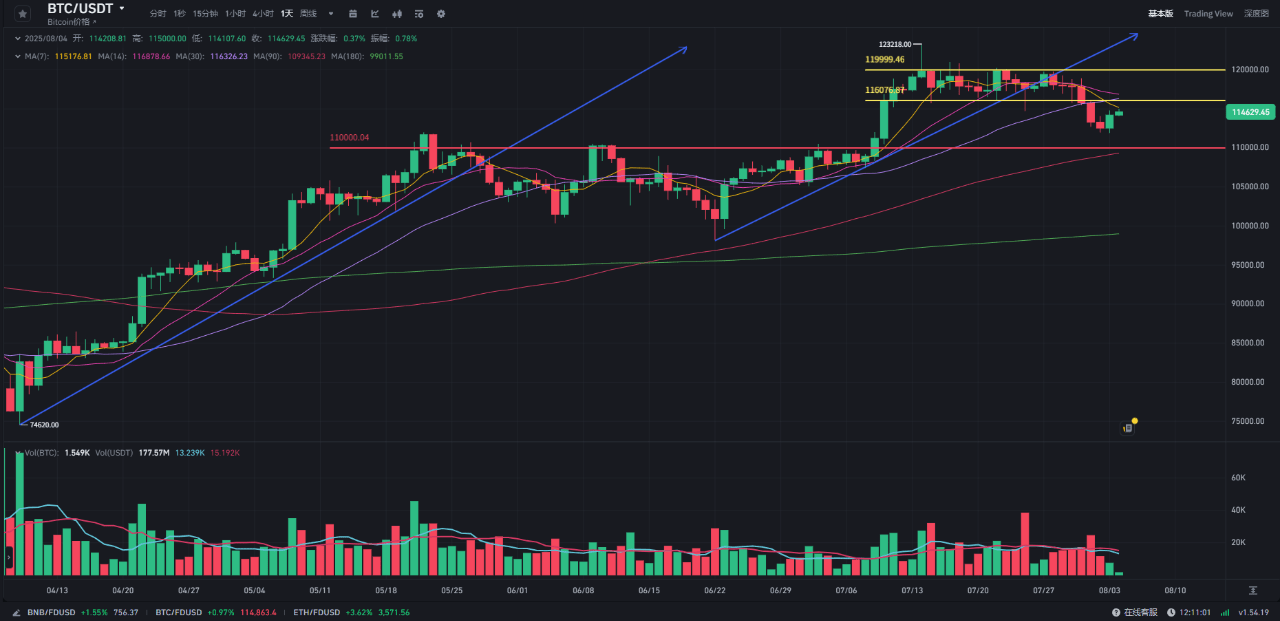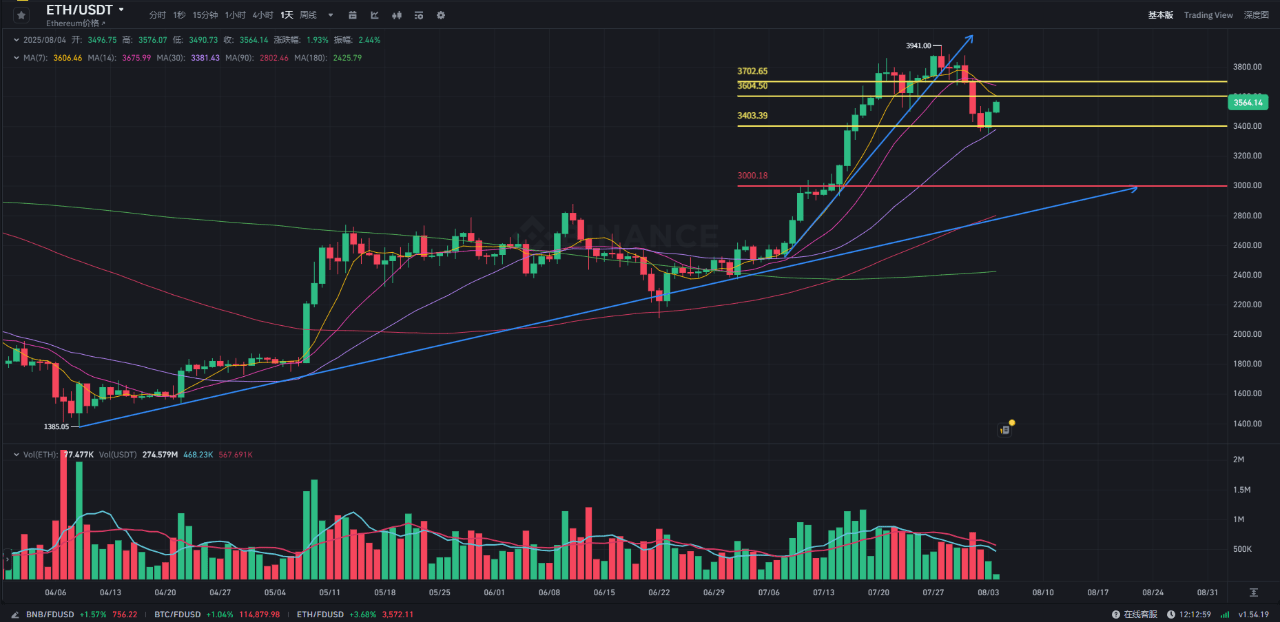
1. Core Dynamics of Fundamentals
The implementation of U.S. tariff policies reshapes the trade landscape.
U.S. Trade Representative Tai has made it clear that tariff policies are basically fixed: a 35% tariff on Canada, 50% on Brazil, 25% on India, and 39% on Switzerland. This policy implementation eliminates short-term uncertainty, but high tariffs will increase import costs in the long run, potentially transmitting through the supply chain to global inflation, indirectly affecting the Fed's policy pace.Strengthened expectations for Fed interest rate cuts, improved liquidity outlook.
Market data shows that the probability of the Fed cutting rates by 25 basis points in September has risen to 89.1%. The combination of 'clear rate cut expectations + controllable inflation' is favorable for crypto assets — liquidity-sensitive assets like BTC and ETH often perform well in this environment. Coupled with the decline in U.S. Treasury yields, the attractiveness of non-yielding assets increases, and the probability of incremental ETF purchases rises. Additionally, the fear and greed index has risen to 64, shifting from 'neutral' to 'greed', indicating a positive market sentiment.
2. Technical Analysis of Mainstream Coins
1. Bitcoin (BTC): Rebound momentum is in doubt, key levels determine direction.
The weekly line broke below the recent two-week low of 116K, closing with a large bearish candlestick, stopping the decline at the weekly MA7 daily moving average, and showing a significant rebound driven by interest rate cut expectations. The daily line shows that after last week's continuous decline, the MA7/14/30 daily moving averages formed a death cross and are diverging downward. The weekend rebound failed to change the short-term adjustment trend, with clear pressure. The lower MA90 daily moving average (around 109K) coincides with the platform from the last round of upward movement, forming an important defensive line for bulls.

Trading volume characteristics are worth noting: yesterday's rebound had a substantial range but was insufficient in volume, reflecting weak bullish confidence, thus questioning the sustainability of the rebound. The next two signals to watch: if interest rate cut expectations continue to ferment and liquidity improves, and if the market breaks through 116K with volume, it may initiate a new round of increases; on the contrary, if the 109K support is lost, the adjustment period may extend.
The 4-hour chart shows a continuous rebound over the past 24 hours, but trading volume has significantly shrunk compared to the previous decline phase. Currently, it is stagnating around 115K.
Intraday operations focus on the 115-116K resistance level, with support levels looking at 112.5-113.5K.
2. Ethereum (ETH): Adjustment not over, rebound depends on mainstream sentiment.
Last week, the weekly line rose and then fell, closing with a large bearish candlestick down nearly 10%. The weekly line still has room for adjustment, with support concentrated in the 3200-3000 range. After three consecutive large bearish candlesticks on the daily line, the previously indicated support at 3400 points (MA30 daily moving average) has been reached. Currently, both MA7 and MA14 moving averages are forming a death cross downward. Although there has been a rebound, the trading volume has shrunk, limiting sustainability.

Subsequent market performance highly depends on Bitcoin: if BTC stabilizes above 116K, market sentiment warms, and ETH breaks through 3600 points with volume, it may retest the 3700-point resistance; on the contrary, if mainstream coins weaken, the 3400-point support may fail. It is crucial to note whether the market can turn bullish in the second half of the year, depending significantly on whether the Fed's interest rate cut in September materializes.
The 4-hour chart shows a strong rebound, closing with a large bullish candlestick. The Asian session may continue the rebound.
Intraday operations focus on the 3600-3640 resistance level, with support levels looking at 3480-3510.
3. Altcoin Market: Adjustment to the Starting Point, Layout Focus on Two Major Paths
In this round of adjustment, most altcoins have fallen back to the early July low, giving back all gains from the previous round. This phenomenon confirms the rule that 'uptrends without long bearish bottoms are often temporary markets' — market initiation often sees mainstream coins lead, with altcoins lagging in catch-up, and hotspots rotating quickly with poor sustainability.
In response to this type of market, the 'Rolling Penetrating Rotation Strategy' is highly applicable. In the second half of the year, two major paths can be focused on:
Narrative-driven projects: such as the RWA sector with substantial progress and targets expected to be listed on Coinbase.
On-chain capital concentration projects: such as Layer 2 network tokens with a surge in TVL (Total Value Locked) within the L2 ecosystem.
Operations should beware of FOMO sentiment, avoid blindly chasing rises, and prioritize selecting varieties with clear trends and high capital attention.
(Note: This article is only a market dynamic analysis and does not constitute investment advice. Cryptocurrency prices fluctuate wildly; entering the market requires careful risk assessment.)